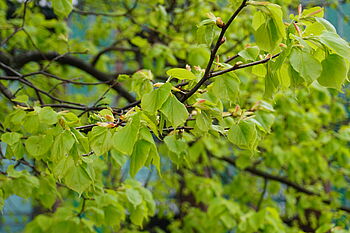Inhalt: Project details
Duration
10.2022 - 10.2025
Contact person
- Dr. Mona Quambusch (G)
(Project lead)
Tel: +49 (0)3946 47-7718
mona.quambusch@julius-kuehn.de
- Vera Hörmann (G)
(Project coordination)
Tel: +49 (0)3946 47-7748
vera.hoermann@julius-kuehn.de
JKI Project team
Institute for Plant Protection in Horticulture and Urban Green (G)
- Dr. Falko Feldmann
- Dr. Michael Strohbach
- Malkin Gerchow
- Arsené Rutikanga
Institute for Strategies and
Technology Assessment (SF)
Project partner at the TU Braunschweig
- Dr. Matthias Beyer
matthias.beyer(at)tu-braunschweig.de
IGÖ - Abt. Umweltgeochemie
- Dr. Michael Strohbach
IGÖ – Abt. Landschaftsökologie & Umweltsystemanalyse
Project partner at the Christian-Albrechts-Univercity Kiel
Institute of Geoscience
- Prof. Dr. Matthias Bücker
matthias.buecker(at)ifg.uni-kiel.de
Inhalt: Developing knowledge and tools for climate change mitigation and adaptation with multifunctional urban green infrastructure (CliMax)
Background:
Green infrastructure is increasingly a component of climate change mitigation and adaptation concepts for urban areas. Urban trees provide important ecosystem services (including carbon sequestration) and are often located in extreme sites. In urban areas, water supply emerges as one of the key limiting factors for tree vitality. To maximize carbon sequestration, long-lasting tree vitality must be achieved.
Objectives:
As part of the CliMax project, urban trees in Braunschweig and Brandenburg an der Havel are being examined. For this purpose, laser scans and visual vitality analyses are carried out on selected test plots. These will be complemented by testing fluorometer-based stress analysis of urban trees. Hydrogeophysical reconnaissance of tree sites and measurement of stable water isotopes will be used to identify water sources. At the city scale, structural features will be derived from LiDAR data and used to calculate vegetation indices from optical satellite data. Finally, machine learning methods will be used to combine vegetation indices, weather data, and information from tree inventories to model tree vitality and risk categorization of sites. The goal is to estimate the contribution of urban green space to carbon sequestration and develop decision support tools for municipalities and cities to maximize carbon sequestration.


